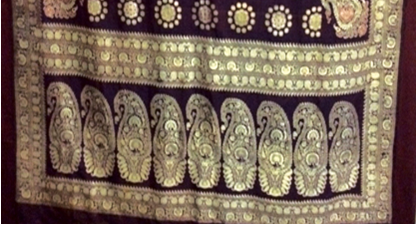
Crafts, Handlooms, Art, Craftspersons/ Artisanal
Bandhani: Process and Technique
The AIACA
April, 2019
| Introduction The art of Bandhani is highly skilled process. The technique involves dyeing a fabric which is tied tightly with a thread at several points , thus producing a variety of patterns like Lehriya, Mothda, Ekdali and Shikari depending on the manner in which the cloth was tied. |
| History Different forms of tie and dye have been practiced in India. Indian Bandhani, a traditional form of tie and dye, began about 5000 years ago. Also known as Bandhni and Bandhej, it is the oldest tie and dye tradition still in practice. Dyes date back to antiquity when primitive societies discovered that colours could be extracted from various plants, flowers, leaves, bark, etc., which were applied to cloth and other fabrics. Even though color was applied they didn't consider this dyeing. It was simply a form of embellishment. What was considered dyeing was the art of using color to form a permanent bond with fiber in a prepared dye bath. Ancient artists discovered that some dyes dissolved and gave their color readily to water, forming a solution which was easily absorbed by the fabric. Herbs and plants like turmeric and indigo were crushed to a fine powder and dissolved in water so that cotton material could be dyed in deep colours. These colours have been used in India since ancient... |
This is a preview. To access all the essays on the Global InCH Journal a modest subscription cost is being levied to cover costs of hosting, editing, peer reviewing etc. To subscribe, Click Here.



